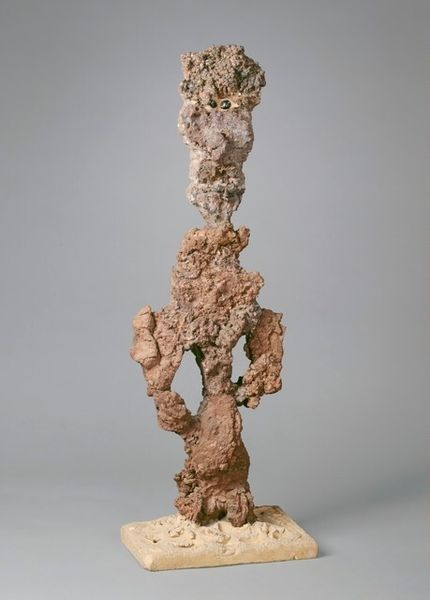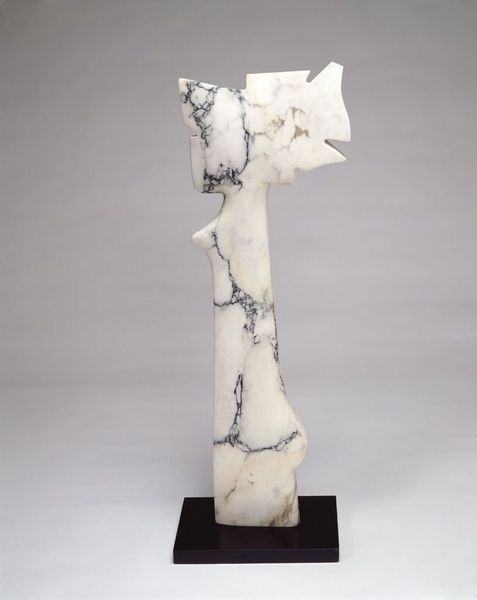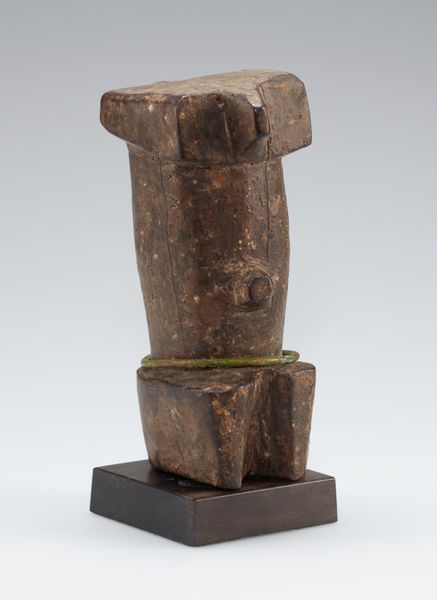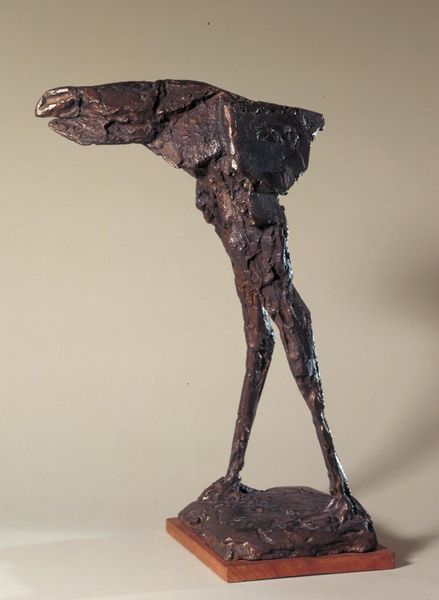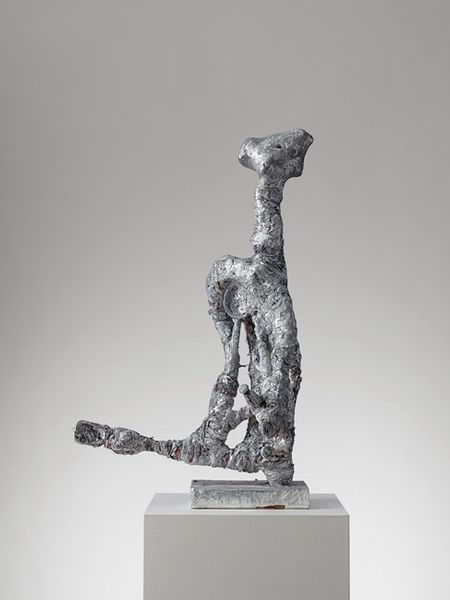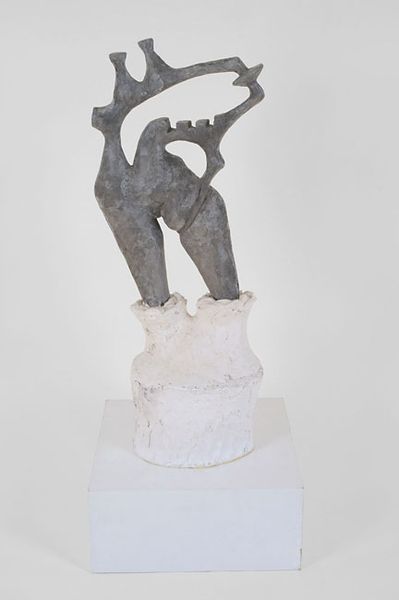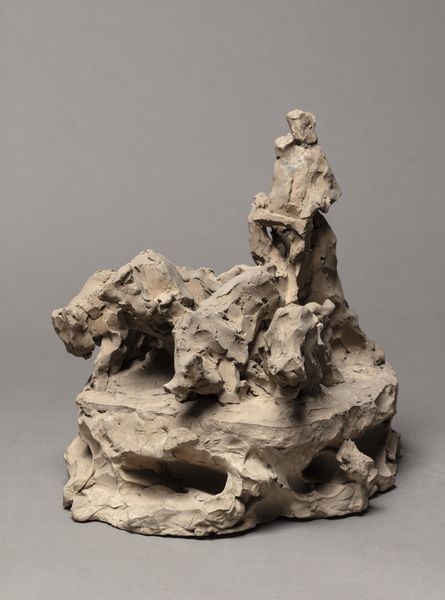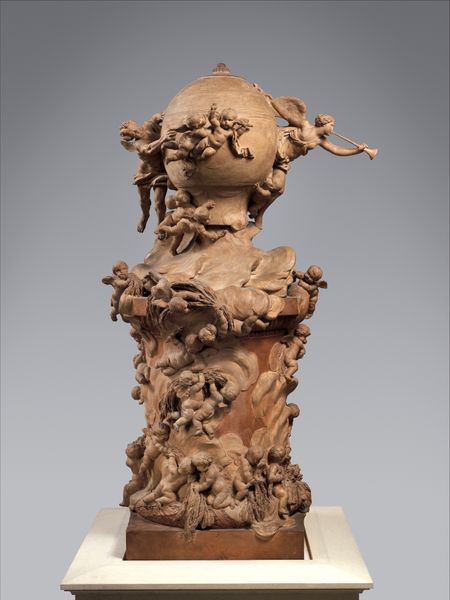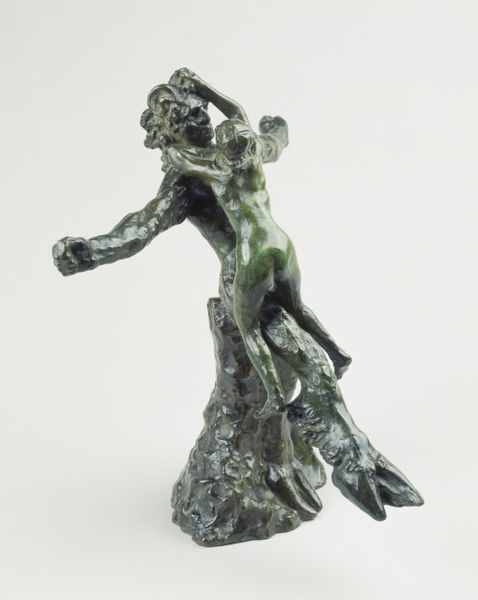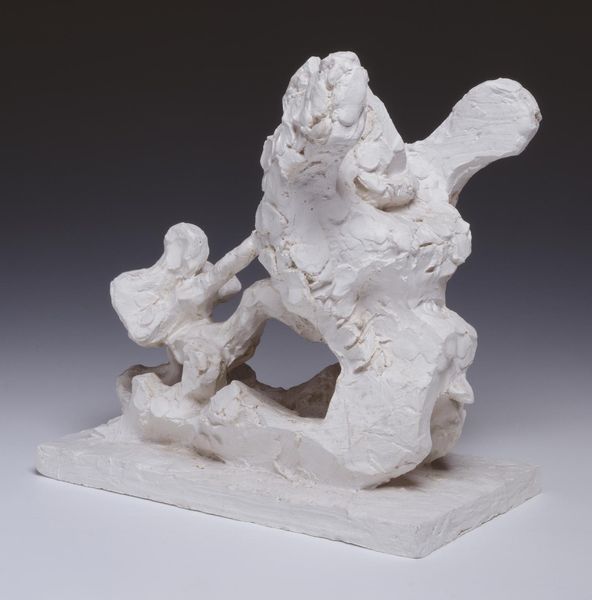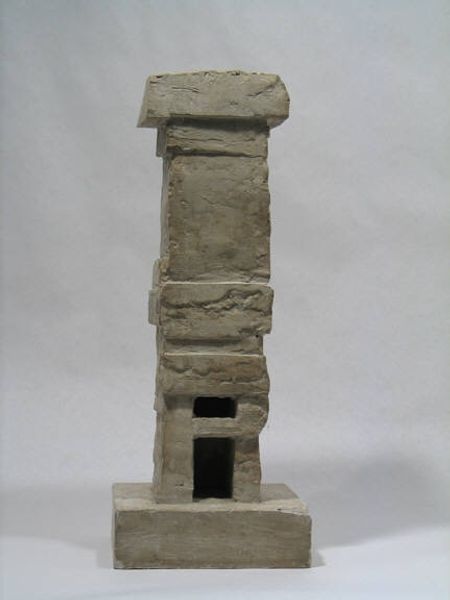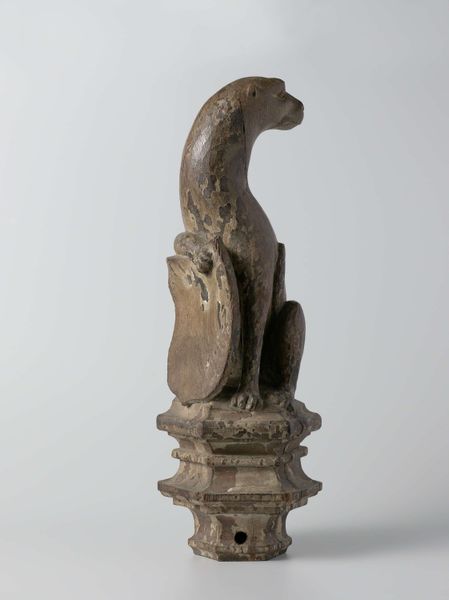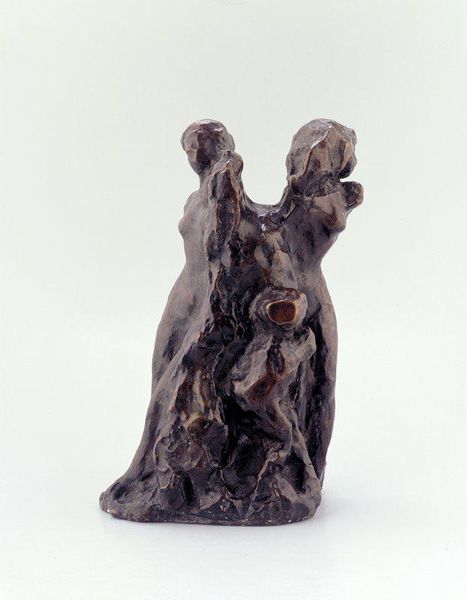
Dimensions: object: 330 x 133 x 133 mm
Copyright: © The estate of Jacques Lipchitz, courtesy, Marlborough Gallery, New York | CC-BY-NC-ND 4.0 DEED, Photo: Tate
Curator: Here we have Jacques Lipchitz’s sculpture, David and Goliath, on a Column, part of the Tate collection. Editor: It has a primal, almost brutal feel to it, doesn’t it? The rough texture amplifies the struggle. Curator: Indeed. Lipchitz reduces the biblical narrative to its raw essence through form and materiality. Notice how the figures are fused, almost indistinguishable. Editor: It's fascinating how the column itself becomes a silent witness, or perhaps even a participant, elevating the drama. Columns often symbolize strength, but here, it seems to magnify the violence. Curator: The limited color palette—earthy tones—focuses our attention on the interplay of positive and negative space, the pushing and pulling of forms. Editor: The David and Goliath story has always been about the triumph of the underdog, of course. But here, Lipchitz seems to blur those lines, presenting a more ambivalent, unsettling vision of power. Curator: A potent reminder that victory can be a brutal, complex thing. Editor: Yes, and that symbols continue to morph and reflect us across time.
Comments
tate 6 months ago
⋮
http://www.tate.org.uk/art/artworks/lipchitz-david-and-goliath-on-a-column-t03495
Join the conversation
Join millions of artists and users on Artera today and experience the ultimate creative platform.
tate 6 months ago
⋮
Lipchitz used scenes from the Old Testament or from classical mythology to convey explicitly political messages at a time when authoritarian politics were beginning to dominate Europe. A Lithuanian-born Jew, he wrote that this David and Goliath study was related to ‘my hatred of fascism and my conviction that the David of freedom would triumph over the Goliath of oppression’. In the larger version of the work, exhibited at the Paris Salon of 1934, Lipchitz placed a swastika on the chest of Goliath, drawing an explicit parallel with the Nazi threat. Gallery label, November 2006
